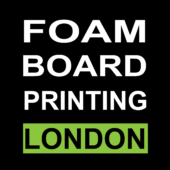Attaching foam board to a wall can be a practical solution for showcasing art, posters, signs, or even temporary displays. Foam boards are lightweight and versatile, but to ensure they stay in place securely, it’s important to use the right methods and materials. In this guide, we will walk you through the process of attaching foam board to a wall safely and effectively.
Materials Needed:
- Foam board
- Measuring tape or ruler
- Pencil or marker
- Adhesive (double-sided tape, mounting strips, or foam board adhesive)
- Nails, screws, or picture hooks (optional)
- Level (optional)
- Drill (optional)
Step 1: Measure and Plan the Placement
Before you begin attaching the foam board, determine the exact placement on your wall. Use a measuring tape or ruler to mark the desired height and location for the foam board. A pencil or marker can be used to make small guide marks. If you want to ensure the foam board is perfectly aligned, use a level to draw a straight horizontal line where the board will sit. This will help you avoid any crooked placements.
Step 2: Choose the Right Adhesive
The type of adhesive you use will depend on several factors, such as the weight of the foam board and the surface of the wall. Here are some popular options:
- Double-Sided Tape: For lightweight foam boards, double-sided tape can provide a quick and easy solution. It’s ideal for temporary displays like posters or artwork.
- Mounting Strips: These are strong, removable adhesive strips that work well for mounting foam boards without causing damage to the wall. They are perfect for renters or anyone who doesn’t want to leave marks.
- Foam Board Adhesive: This adhesive is specially designed for foam boards and provides a strong bond. It’s typically used for heavier boards or permanent mounting.
- Nails or Picture Hooks: If you want a more secure option, especially for larger or heavier foam boards, you can use nails, screws, or picture hooks. These methods will require drilling into the wall.
Step 3: Apply the Adhesive
Once you’ve chosen your adhesive, follow the manufacturer’s instructions. For double-sided tape or mounting strips, cut the strips to fit the edges of the foam board. Press the strips firmly onto the back of the foam board, ensuring even coverage across all edges.
If you’re using foam board adhesive, apply a thin, even layer to the back of the foam board. Be sure not to use too much adhesive, as it can seep out when pressed against the wall.
Step 4: Attach the Foam Board to the Wall
Carefully lift the foam board and press it against the wall in the marked position. If you’re using double-sided tape or mounting strips, press firmly to ensure a strong bond. Hold it in place for a few seconds to give the adhesive time to stick.
If you’re using nails, screws, or picture hooks, position the foam board on the wall and mark the spots where you want to insert your hardware. Drill small holes into the wall, then insert nails or screws into the foam board and hang it accordingly.
Step 5: Adjust and Secure
Once the foam board is attached, step back and ensure it’s level and positioned where you want it. If needed, make minor adjustments to align it properly. If you’re using picture hooks, you can also use additional nails for extra stability, especially for heavier foam boards.
Step 6: Final Touches
After the foam board is securely in place, give it a gentle push to ensure it’s firmly attached. If you’re using temporary methods like mounting strips or double-sided tape, you can remove and reattach the foam board as necessary. For permanent solutions like nails or screws, ensure that the foam board is stable and won’t move.
Conclusion
Attaching a foam board to a wall is a straightforward task when using the right tools and techniques. Whether you’re creating a temporary display or mounting a more permanent fixture, choosing the right adhesive and ensuring proper placement will ensure your foam board stays in place securely. With these simple steps, you can create a clean, organized, and attractive display for your home, office, or event.
